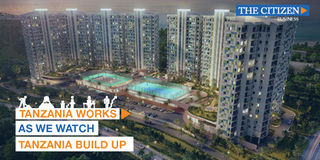What makes real estate sub-sector tick

What you need to know:
>> NHC is the government’s company established to undertake an array of business in real estate.
The Tanzanian real estate sector has grown sensibly in the recent years. This growth can be attributed to a number of factors including an impressive GDP growth rates which the country has experienced over the past decade averaging almost seven percent per year. The GDP grew by 7.8 percent in Q2 of 2017.
This strong and sustained economic growth, integrated with a fast growing population, has also boosted real estate in the country. Last year, the population was pegged at 53.7 million and expected to be more than double by 2050. Such a population has led to a house shortage of three million units and an estimated current house demand of 200,000 houses annually, as explained by Nehemiah Kyando Mchechu, the then Director General of Tanzania’s National Housing Corporation (NHC).
NHC is the government’s company established to undertake an array of business in real estate.
Urbanisation has also been a catalyst to development of real estate in cities like Dar es Salaam. Some 31.6 percent of Tanzania’s 53.47 million population is living in urban areas. The urbanisation growth rate in Tanzania is 5.5 percent per annually. All this has led to demand of residential space in urban areas.
In cities like Arusha, Mwanza and Mbeya, real estate growth has been driven by the thriving sectors such as agriculture, tourism and mining industry, that has led to traders and farmers choosing to invest in real estate rather than put their money in the banks.
The discovery of gas in 2015 also led to an influx of expatriates in the country driving demand in commercial space, that is office buildings, hotels, restaurants and shopping centres to a great degree in Dar es Salaam.
House financing in Tanzania has evolved with the helping hand of Tanzania Mortgage Refinance Company (TMRC) thus boosting real estate through finance. Since the establishment of TMRC in 2010 its core purpose has been to refinance banks and other Primary Mortgage Lenders (PML) mortgage portfolios, boasting successes such as the number of lenders in the market increasing from three in 2010 to 31 by September 2017 and the average mortgage interest rate falling from 19 percent to 16 percent.
All this promoting easier access to mortgage and affordable terms like the mortgage housing tenors increasing from 5-10 years in 2010 and 15-25 years to date.
“The total outstanding mortgage debt has grown from Sh77.5 billion in 2011 to Sh448.90 billion as of September 2017,” said Mr Oscar Mgaya, the TMRC CEO in an interview with The Citizen.
Furthermore, efforts by the Government, in partnership with global non-profit institutions and foreign governments, to meet the rising demand of affordable housing, has also led to the development of real estate in Tanzania, substantially in Dar es salaam.
As a result, we have witnessed tremendous investments in this sector, from massive projects like Safari City in Arusha; Morocco square in Dar es Salaam all by NHC, to Sky skyscrapers like Tanzania Port Authority (TPA) headquarters and the introduction of the first Real Estate Investment Trust (REIT) like Watumishi Housing Company (WHC - REIT) established to implement the Tanzania Public Servant Housing Scheme tasked with building of 50,000 housing units that commenced in 2014.
Stay tuned to Tanzania works as we explore The business of real estate in Tanzania.
The business of real estate is proudly brought to you by Raha Broadband visit, www.raha.co.tz




